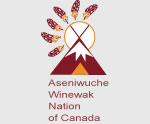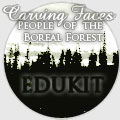Sweetgrass

The Chipewyan called it tlh'otsėn, the "grass that smells"; the Cree gave it names such as wehkuskwa and wekus; while the Slave called it hleko, meaning "sweet." It was herbe sainte, or "holy herb" to the French, and in English, it is known simply as sweetgrass.
Sweetgrass is a perennial aromatic grass that grows in meadows, moist soil, disturbed areas, and along lakeshores throughout the northwest. The sweetgrass plant forms long rhizomes, or underground stems, from which a number of shoots can grow. These shoots can grow up to sixty centimetres tall, and form short leaves. The extensive root systems of sweetgrass serve as a stabilizer of loose soil in sloped areas.
Kinnickinnick is not an official plant, but rather a Cree name for a tobacco created from a mixture of different plants, namely the leaves of bearberry and red willow. The bearberry plant is sometimes called kinnickinnick for this reason. Kinnickinnick is included here primarily because, like sweetgrass, it was sometimes used by some Aboriginal Peoples in their spiritual lives.
Traditional Uses:
Sweetgrass was considered a holy plant mainly by the Plains Peoples of the Northwest, though reverence for this plant, along with its ceremonial and ritual use as in incense, did carry up to the Aboriginal Peoples of the boreal forest as well. Traditionally, sweetgrass was picked, braided, and dried for use in gatherings and ceremonies. The braided sweetgrass was placed on hot coals and burned as an offering. This braid could also be lit at one end, and allowed to smoulder. The smoke was swept with cupped hands over the head, arms, legs, and torso as an act of purification. The smoke would drive out evil spirits and carry prayers up to the Creator.
Medicinally, sweetgrass could be boiled and made into a tea to relieve coughs or nausea. The smoke was sometimes inhaled to help treat colds and stop nosebleeds. It could also be incorporated into various art designs or hung on the interior wall of a dwelling for use as an air freshener.
Kinnickinnick, a traditional tobacco, would sometimes be used in similar ways to sweetgrass. The dried leaves of the bearberry plant would be used for pipe tobacco, or as an extender for the tobacco introduced to the Aboriginal Peoples by the Europeans during the fur trade. Kinnickinnick had spiritual value as an offering. Up to the 1900s, one traditional practice among some Aboriginal Peoples was to take an offering of kinnickinnick and return it to the land in thanks for a food harvest.





